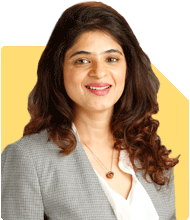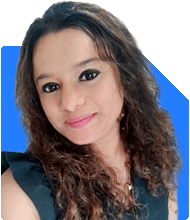Ramalingam Kalirajan |8459 Answers |Ask -Follow
Mutual Funds, Financial Planning Expert - Answered on May 06, 2024
He has an MBA in finance from the University of Madras and is a certified financial planner.
He is the director and chief financial planner at Holistic Investment, a Chennai-based firm that offers financial planning and wealth management advice.... more

Sir , I am 53 year old, advocate, my daughter will complete LLB in next year. I would like make plan for her wedding after 3 years. I have started saving from December 2023 which is monthly 35 - 1L in my local Credit society for interest pm 10%, interest also saving by making recurring deposits. Please suggests me right way savings for my daughters marriage.
• Starting early is key to building a substantial wedding fund, and you've already taken the first step by initiating savings.
• Consider setting a specific target amount for your daughter's wedding expenses, taking into account factors like venue, catering, decorations, and more.
• Assess your current financial situation, including income, expenses, and existing savings, to determine a realistic savings goal.
• Given your age and the relatively short time frame of three years, it's essential to prioritize stable and low-risk investments.
• Explore options like fixed deposits, recurring deposits, and savings accounts for your wedding fund savings.
• Opt for instruments with competitive interest rates and minimal risk to safeguard your capital while earning steady returns.
• Consider diversifying your savings across different instruments to mitigate risk and maximize returns.
• Regularly review your savings plan and make adjustments as needed to stay on track towards your goal.
• Consulting with a Certified Financial Planner can provide personalized advice and guidance tailored to your specific needs and circumstances.
• Remember, your daughter's wedding is a joyous occasion, and your efforts to save for it will make it even more special.
• Stay focused on your goal, and keep up the good work with your savings plan.
• Your dedication and foresight will ensure your daughter's wedding is a beautiful and memorable celebration.
By following these steps and staying disciplined with your savings plan, you'll be well-prepared to finance your daughter's wedding and create cherished memories for your family.
You may like to see similar questions and answers below
Ramalingam Kalirajan |8459 Answers |Ask -Follow
Mutual Funds, Financial Planning Expert - Answered on Aug 14, 2024
Radheshyam Zanwar |1634 Answers |Ask -Follow
MHT-CET, IIT-JEE, NEET-UG Expert - Answered on May 16, 2025
Radheshyam Zanwar |1634 Answers |Ask -Follow
MHT-CET, IIT-JEE, NEET-UG Expert - Answered on May 16, 2025
Ashwini Dasgupta |107 Answers |Ask -Follow
Personality Development Expert, Career Coach - Answered on May 16, 2025
Ramalingam Kalirajan |8459 Answers |Ask -Follow
Mutual Funds, Financial Planning Expert - Answered on May 16, 2025
Ramalingam Kalirajan |8459 Answers |Ask -Follow
Mutual Funds, Financial Planning Expert - Answered on May 16, 2025
Milind Vadjikar |1236 Answers |Ask -Follow
Insurance, Stocks, MF, PF Expert - Answered on May 16, 2025
Milind Vadjikar |1236 Answers |Ask -Follow
Insurance, Stocks, MF, PF Expert - Answered on May 16, 2025
Ravi Mittal |589 Answers |Ask -Follow
Dating, Relationships Expert - Answered on May 16, 2025
Ravi Mittal |589 Answers |Ask -Follow
Dating, Relationships Expert - Answered on May 16, 2025
Jinal Mehta |99 Answers |Ask -Follow
Financial Planner - Answered on May 16, 2025























